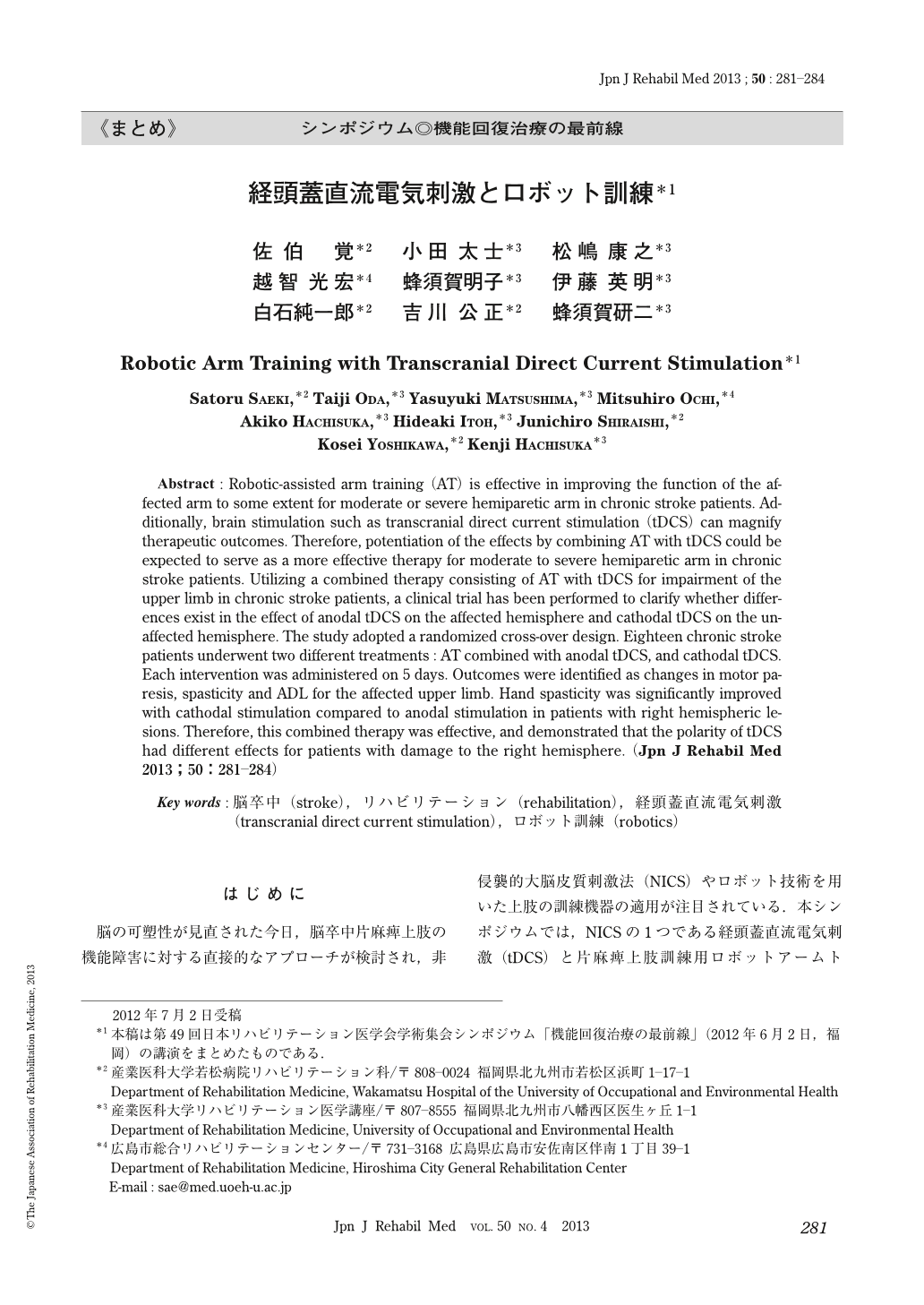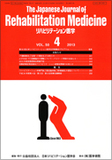Japanese
English
- 販売していません
- Abstract 文献概要
- 1ページ目 Look Inside
- 参考文献 Reference
はじめに
脳の可塑性が見直された今日,脳卒中片麻痺上肢の機能障害に対する直接的なアプローチが検討され,非侵襲的大脳皮質刺激法(NICS)やロボット技術を用いた上肢の訓練機器の適用が注目されている.本シンポジウムでは,NICSの1つである経頭蓋直流電気刺激(tDCS)と片麻痺上肢訓練用ロボットアームトレーナー(BI-MANU-TRACK Robotic Arm Trainer:AT)を併用した訓練に関して,そのメカニズム,臨床効果および今後の展望について述べる.
Abstract : Robotic-assisted arm training (AT) is effective in improving the function of the affected arm to some extent for moderate or severe hemiparetic arm in chronic stroke patients. Additionally, brain stimulation such as transcranial direct current stimulation (tDCS) can magnify therapeutic outcomes. Therefore, potentiation of the effects by combining AT with tDCS could be expected to serve as a more effective therapy for moderate to severe hemiparetic arm in chronic stroke patients. Utilizing a combined therapy consisting of AT with tDCS for impairment of the upper limb in chronic stroke patients, a clinical trial has been performed to clarify whether differences exist in the effect of anodal tDCS on the affected hemisphere and cathodal tDCS on the unaffected hemisphere. The study adopted a randomized cross-over design. Eighteen chronic stroke patients underwent two different treatments : AT combined with anodal tDCS, and cathodal tDCS. Each intervention was administered on 5 days. Outcomes were identified as changes in motor paresis, spasticity and ADL for the affected upper limb. Hand spasticity was significantly improved with cathodal stimulation compared to anodal stimulation in patients with right hemispheric lesions. Therefore, this combined therapy was effective, and demonstrated that the polarity of tDCS had different effects for patients with damage to the right hemisphere.

Copyright © 2013, The Japanese Association of Rehabilitation Medicine. All rights reserved.


